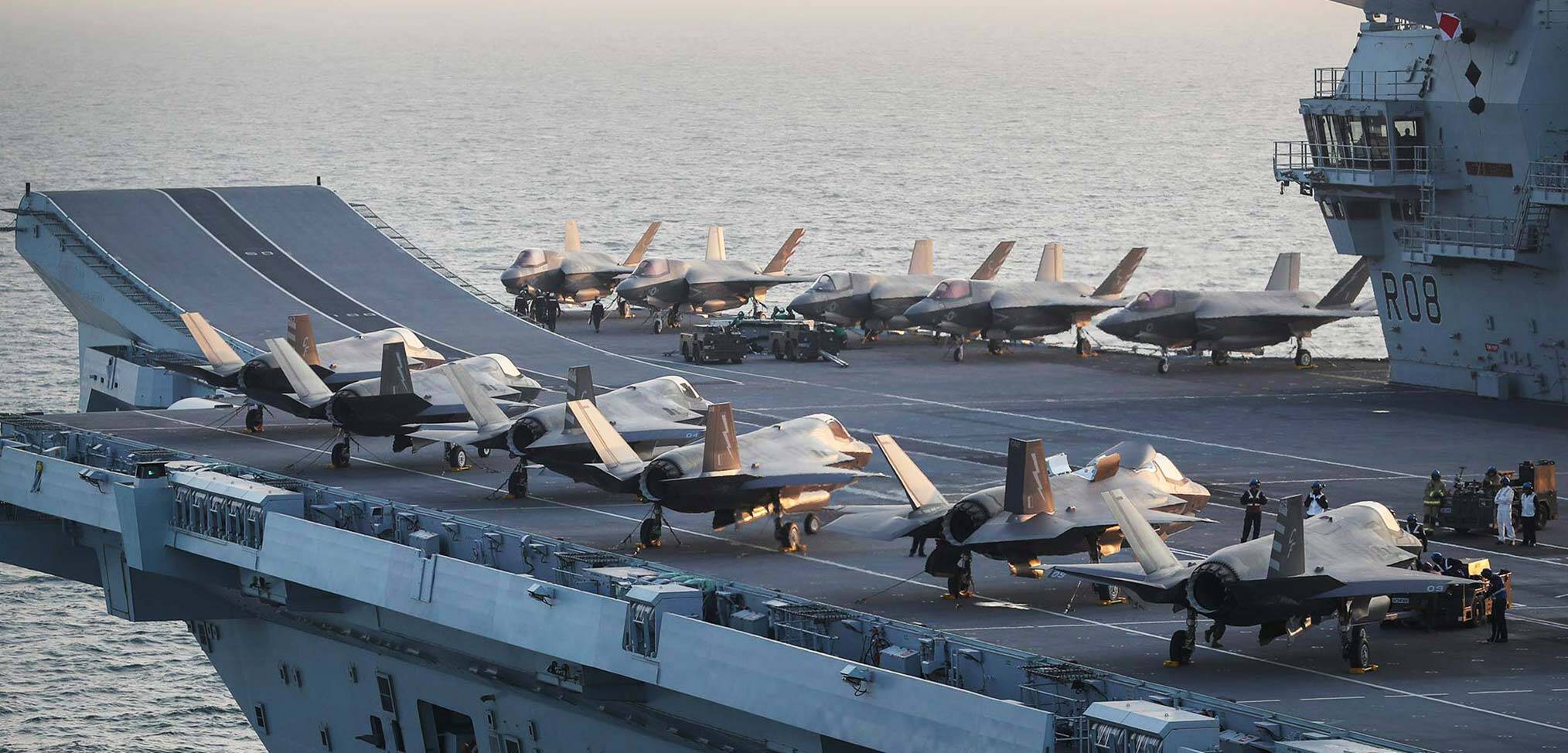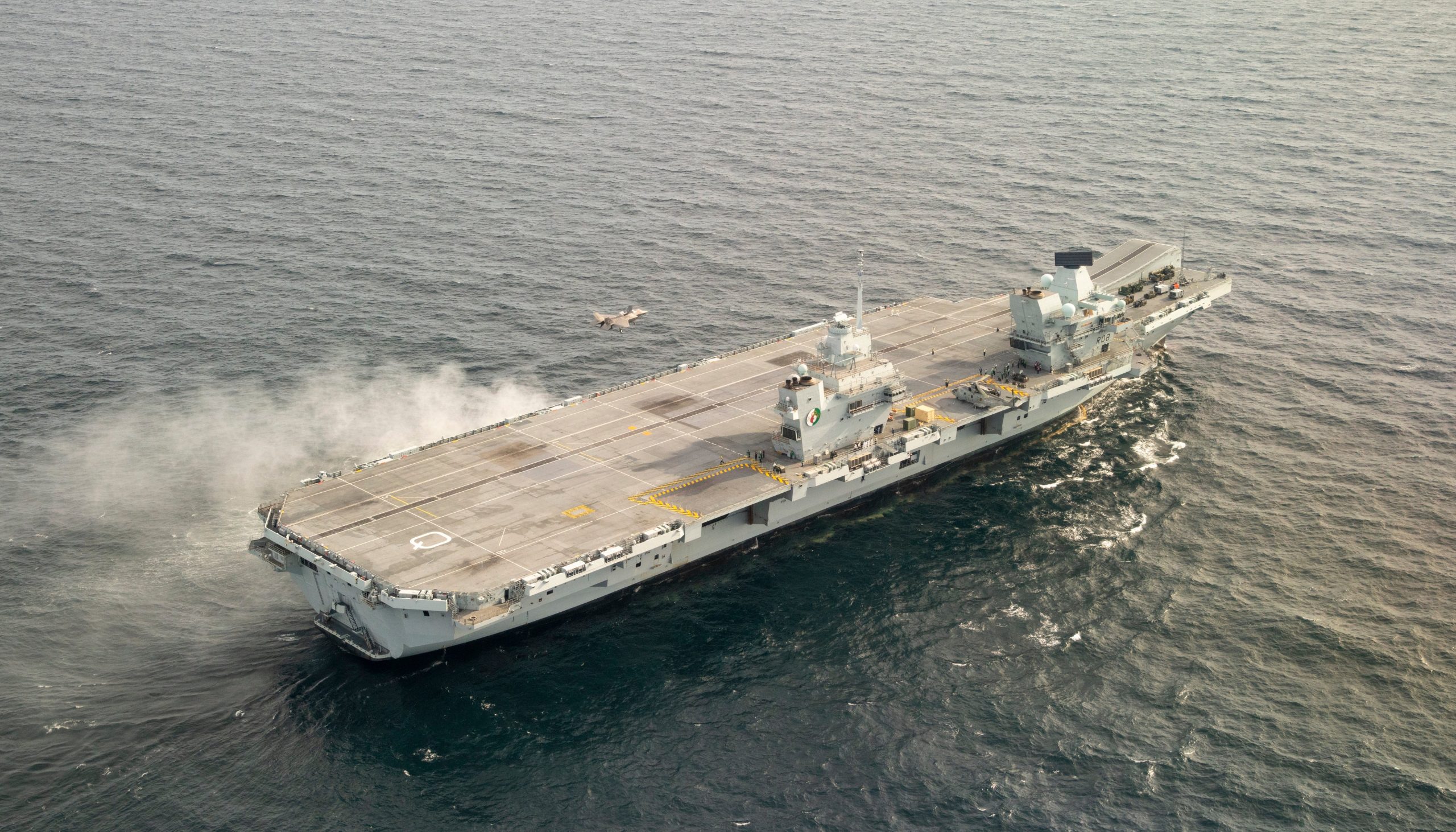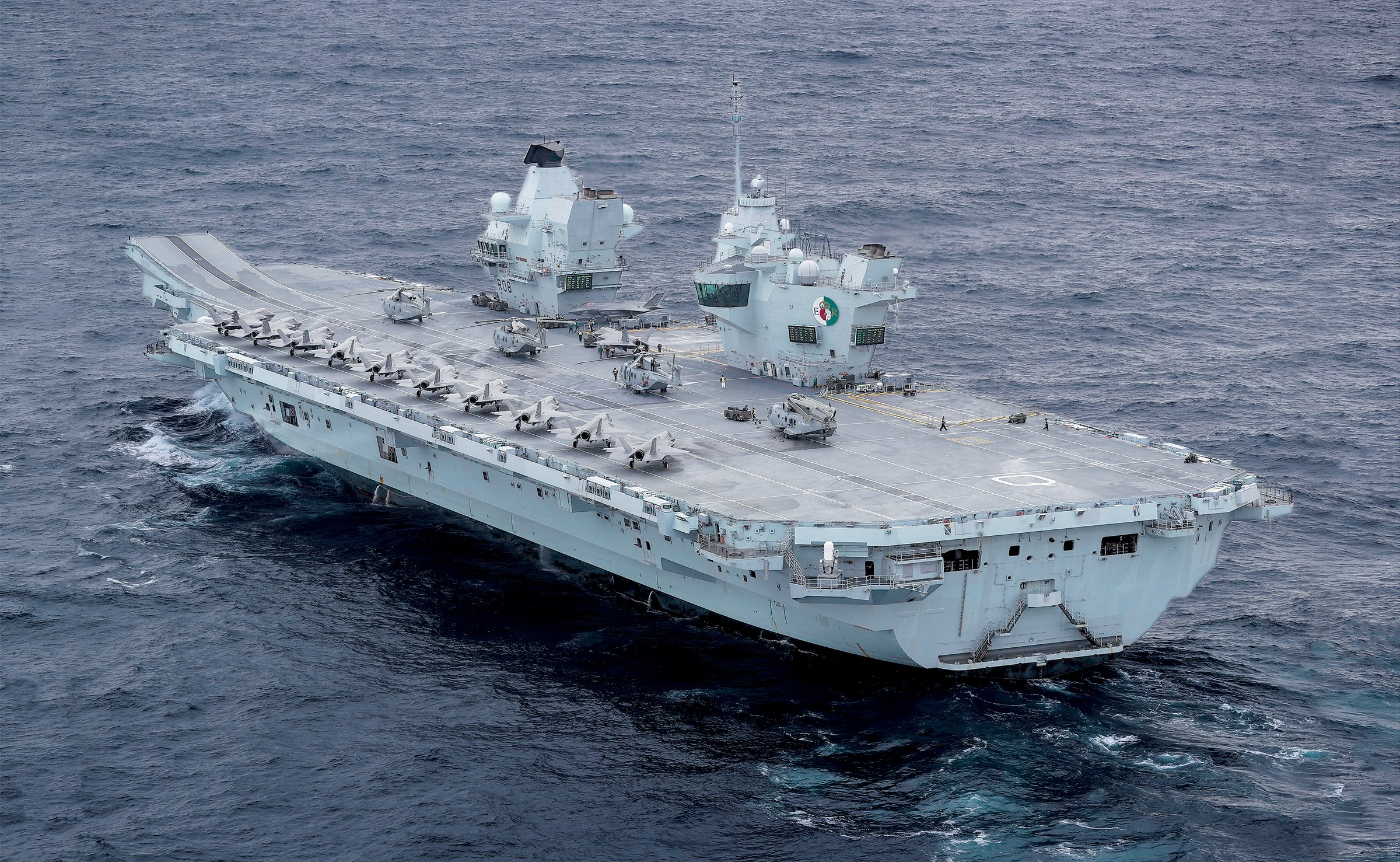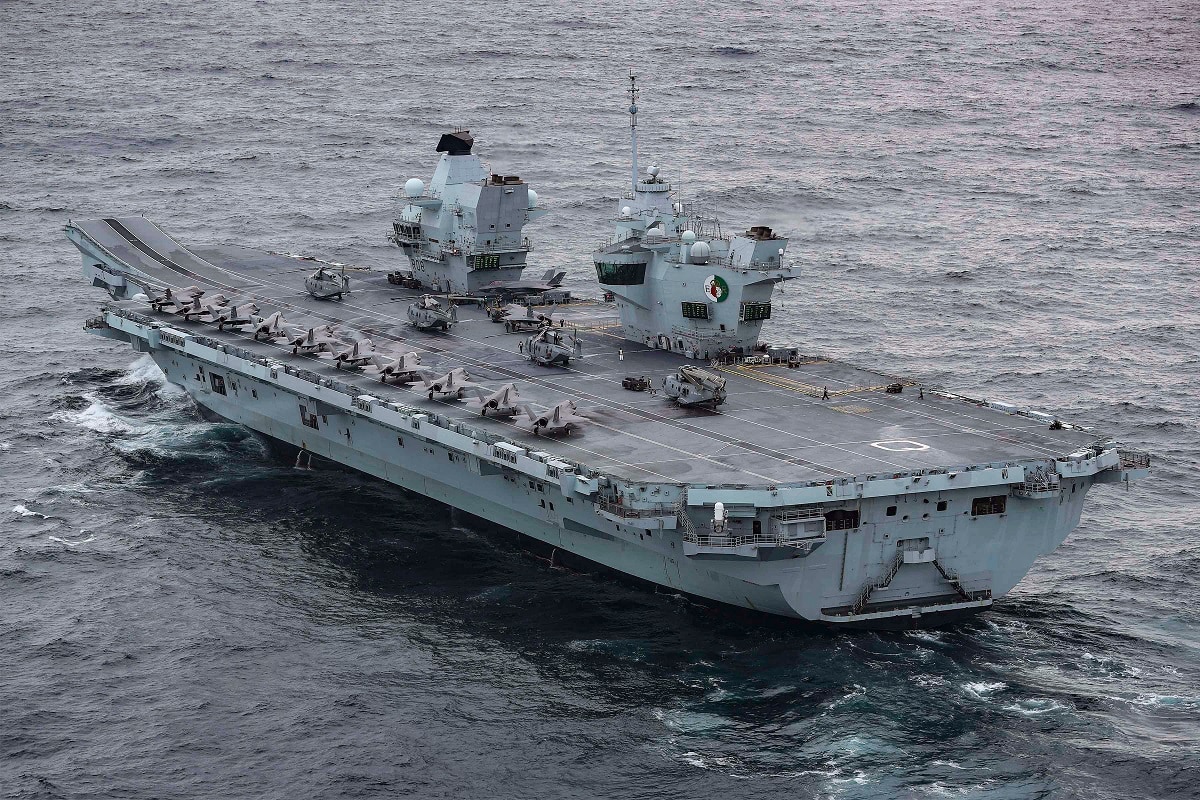
The United Kingdom’s newest aircraft carrier, the HMS Queen Elizabeth, is the largest warship ever constructed for the Royal Navy. The lead of the Queen Elizabeth-class of conventionally powered aircraft carriers, it is also the Royal Navy’s Fleet Flagship, the principal ship of the entire Royal Navy fleet. The carrier is named after the World War One-era Super-dreadnought of the same name, which is itself named after Queen Elizabeth I.

What Makes Her Special
The HMS Queen Elizabeth differs quite significantly from the United States’ aircraft carriers. Unlike their American counterparts, the Royal Navy carriers are conventionally powered, rather than relying on an onboard nuclear reactor, and range is therefore capped at around 10,000 kilometers.
Another significant difference between the American and Royal Navy designs is the HMS Queen Elizabeth’s lack of arrestor wires, a cable system that “catches” airplanes and allows naval aircraft to rapidly decelerate when landing on a carrier. The Queen Elizabeth is, therefore, able to operate with vertical and/or short take-off and landing (V/STOL) aircraft rather than conventional takeoff and landing-type of airplanes.

Additionally, the Queen Elizabeth’s flight deck features a prominent ski-jump, a feature that allows aircraft to become airborne on flight decks that are shorter than their required takeoff length. The ability to operate fixed-wing aircraft from a carrier returns an important capability to the Royal Navy after the service’s Harrier jump jet retirement in 2010.
Most recently, the Queen Elizabeth saw both American and British F-35s jointly conduct operations against ISIS targets — the first time American aircraft conducted combat operations from a U.K. aircraft carrier since the Second World War.

“The involvement of HMS Queen Elizabeth and her air wing in this campaign also sends a wider message. It demonstrates the speed and agility with which a U.K.-led Carrier Strike Group can inject fifth generation combat power into any operation, anywhere in the world, thereby offering the British government, and our allies, true military and political choice,” Royal Navy Commodore Steve Moorhouse said in a Royal Navy statement on the HMS Queen Elizabeth’s recent deployment.

Although the HMS Queen Elizabeth is not the nuclear-powered behemoths that the United States aircraft carriers are, the carrier nonetheless restores the Royal Navy’s ability to launch fixed-wing aircraft far from the United Kingdom and as such represents a potent power projection capability. The carrier’s ability to operate in tandem with American aircraft further underscores the closeness of the U.S.-U.K. special relationship. Caleb Larson is a Defense Writer based in Europe. He holds a Master of Public Policy and covers U.S. and Russian security, European defense issues, and German politics and culture.





